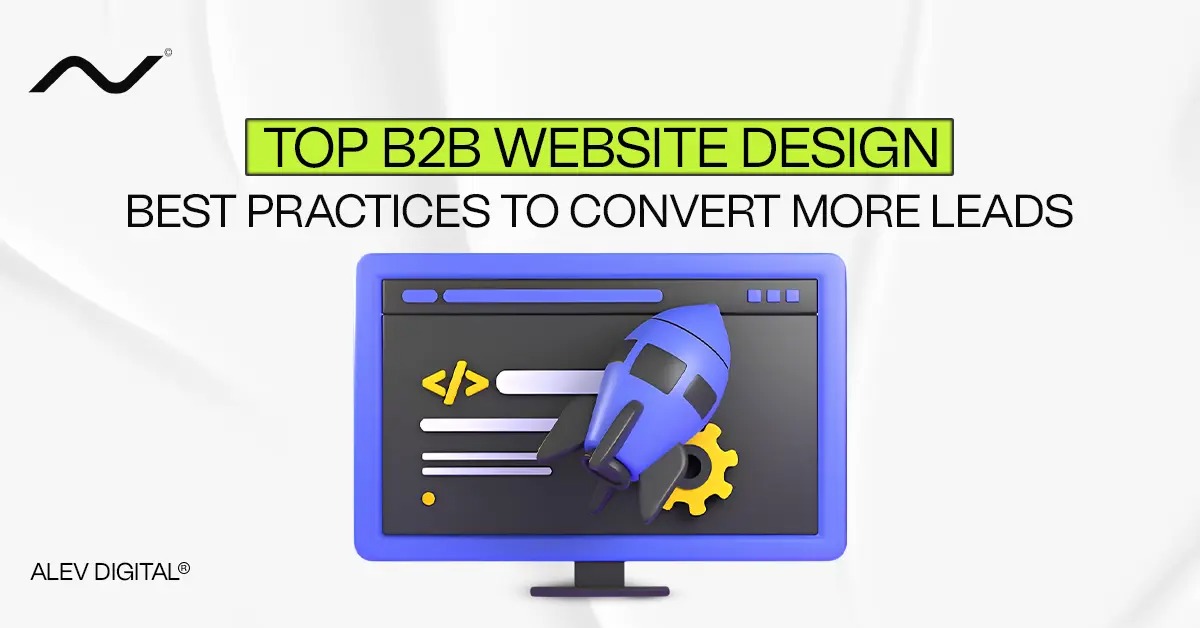Mastering B2B Website Best Practices for Growth in 2025

In today’s competitive digital landscape, implementing b2b website best practices is critical for businesses seeking to attract and convert other businesses. A B2B website is no longer just a digital brochure; it’s a strategic sales tool. Companies that focus on optimized design, messaging, and functionality outperform competitors by making navigation intuitive and conversion seamless.
Know Your B2B Buyer Persona
Understanding your target audience is foundational. Unlike B2C, B2B buyers are often decision-makers, budget controllers, or procurement managers. Your site must reflect a deep understanding of their pain points, goals, and expectations. Successful B2B websites deliver personalized content that guides visitors through a logical decision-making process rooted in ROI and value.
Clear and Actionable Navigation
A B2B website must offer clean, clutter-free navigation that directs users where they need to go without frustration. Menu structures should reflect your sales funnel from educational blog posts to product pages and demo requests. Simplified navigation not only enhances user experience but also increases lead conversions dramatically.
Focus on Value Proposition and Trust Signals
Your homepage should immediately communicate who you are, what you do, and why you matter. This is where your unique value proposition (UVP) must shine. Including social proof, certifications, case studies, testimonials, and client logos builds instant trust. These elements are essential b2b website best practices that influence buying behavior.
Optimize for Lead Generation
Calls to action (CTAs) are more than buttons they’re invitations to start a conversation. Whether it’s a “Request a Demo” or “Download Our Guide,” each CTA should align with the buyer’s stage in the funnel. Strategically placing CTAs above the fold, within blogs, and at the end of service pages increases qualified leads.
Mobile-Responsive and Speed Optimized Design
Your site must work flawlessly across all devices. B2B buyers conduct research on-the-go, and a site that’s not mobile-friendly risks losing serious prospects. Additionally, loading speed affects SEO and user engagement. Compress images, use caching, and optimize scripts to keep your site lightning fast.
SEO and Content Integration
High-quality content, backed by keyword research, drives organic traffic. Blog posts, case studies, whitepapers, and solution pages that address your audience’s questions and needs are central to B2B website success. Implementing internal linking, schema markup, and meta optimization is part of the most impactful b2b website best practices for visibility and engagement.
Integrate CRM and Marketing Tools
Your website must work in harmony with tools like HubSpot, Salesforce, or Zoho CRM. Captured leads should automatically sync with your pipeline. Use live chat, email automation, and behavior-triggered follow-ups to nurture visitors effectively and maximize conversion opportunities.
Continuous Testing and Improvement
Even the most polished B2B website must be revisited regularly. Use heatmaps, session recordings, and A/B testing to understand user behavior. Optimize based on real-time analytics to refine CTAs, messaging, and UX for long-term growth.
Mobile-Friendly and Responsive Design
A growing number of B2B decision-makers access websites through mobile devices. As such, optimizing your website for mobile responsiveness is crucial. Your B2B website needs to adapt seamlessly to any screen size, providing the same smooth experience regardless of device. Additionally, fast loading times are essential for mobile users, as slow sites lead to higher bounce rates.
Use Data and Analytics to Optimize Performance
Once your website is live, it’s crucial to monitor its performance regularly. B2b website best practices include setting up analytics to track user behavior, identify traffic patterns, and measure conversion rates. Tools like Google Analytics, heatmaps, and A/B testing can provide insights into how visitors interact with your site. These insights will allow you to make data-driven decisions for continual website improvements.
Focus on Lead Nurturing and CRM Integration
Your website is a vital touchpoint in the lead nurturing process. Integrating your site with CRM tools like HubSpot or Salesforce ensures that all captured leads are automatically added to your pipeline. Implementing marketing automation tools allows you to follow up with leads at the right time, through the right channels, based on their behavior and interactions on your website.
Conclusion
Executing these b2b website best practices ensures your digital presence performs as both a brand ambassador and a lead-generation powerhouse. In the world of B2B, clarity, functionality, and trust are more important than ever and a website built with these in mind becomes a powerful business asset.
Contact Us
Want to upgrade your B2B site to world-class standards? Contact us at Alev Digital and discover how our strategies are helping businesses grow faster and smarter. Reach out today at +1 469 638 3561, email us at hello@alevdigital.com, or stop by our office in Dallas, Texas 75216, US. Don’t be afraid man! Say hello and let’s build something extraordinary.









